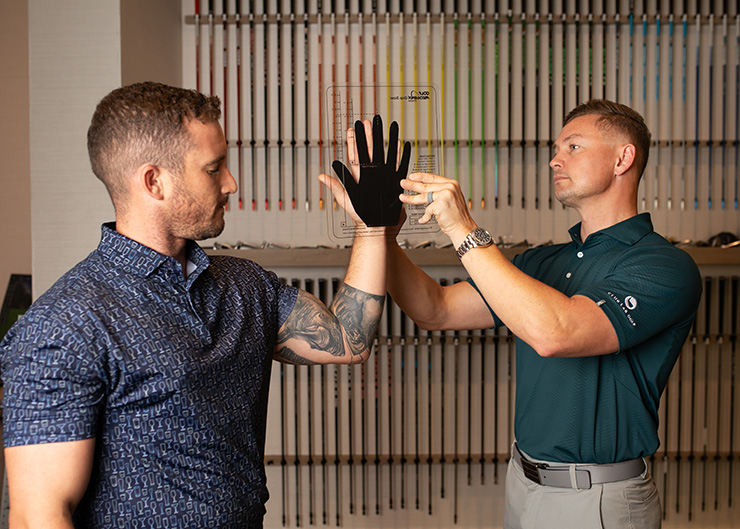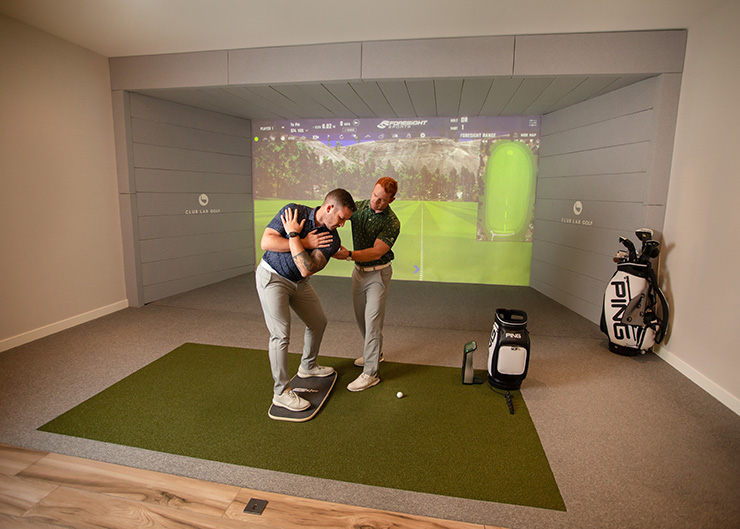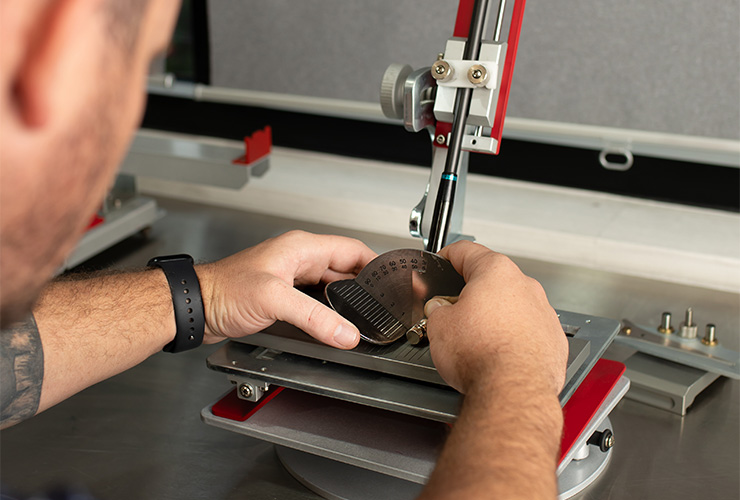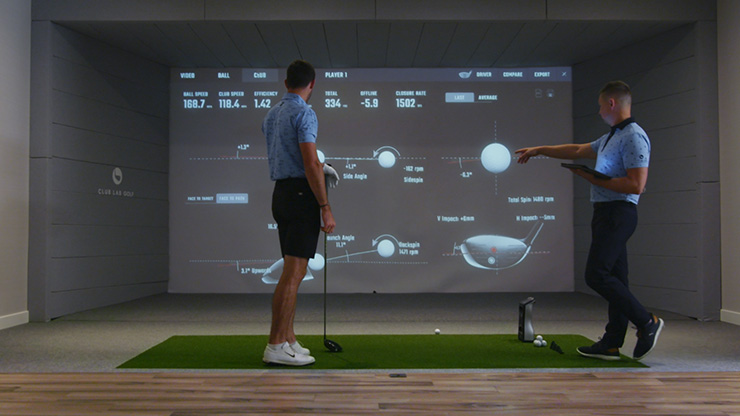Nestled in Jumeirah Lake Towers Dubai, Club Lab Golf presents an unparalleled experience by seamlessly integrating club fitting and building, as well as professional coaching, to enhance the golf culture and knowledge in the region.
The Club Fitting & Building Process
Upon entering Club Lab Golf for a club assessment, the initial focus is on understanding the client’s objectives – whether it be improving distance, control, or lowering their handicap. The process begins with measuring the blueprint of the customer’s current clubs, where the specifications of loft, lie, flex (CPM vs. length), length, grip size, and swing weight are carefully documented.

Essential to the assessment is a thorough warm-up, followed by data collection through high-speed cameras and Foresight Sports’ GC Quad. The Master fitters at Club Lab Golf then analyse the data to identify whether the client’s golf clubs are suited to their swing and optimised for them to play their best game. What sets Club Lab Golf apart is that each client is fitted to their unique swing characteristics, considering factors such as transition, tempo, release, strength, speed, hand size, and wrist-to-floor measurements.
If a re-build is recommended, Club Lab Golf meticulously removes and reconstructs club heads with the correct shaft, matching flex, length, weight, and bend profile. The club’s loft and lie angles are adjusted with precision within a quarter of a degree, even surpassing some of the tightest tolerances of professional tour trucks.
Upon getting custom-fitted clubs, the primary review often involves the lie angles. Whether prompted by significant swing change or on a biannual basis, it is advised for golfers to revisit Club Lab Golf for a brief 10-minute assessment. This ensures a meticulous check of the lie angle, which undergoes more fluctuation due to the swing path change than is commonly perceived.

Club Assessment Process
Step 1 – The Interview
Step 2 – Blueprint of your current set
Step 3 – Warm Up
Step 4 – Analysis of Golfer
Step 5 – Conclusion / RecommendationStep 6 – Build Process
Technology Used
▪ Foresight GC Quad
▪ Golf Mechanics
▪ MR3 Design
▪ Golf Works
▪ Swing Catalyst
Misconceptions in golf swing
▪ Correct Grip, Stance and Posture
▪ Importance of Swing Path
▪ Club Face at Impact
▪ Early Extension

Misconceptions in club fitting and building
▪ Big or small grip sizes aren’t necessarily related to how active your hands are
▪ Shafts Launch angles do match spin rates – e.g. high launch = high spin
▪ Club Brand doesn’t change your distance – it’s just the lofts being strengthened
▪ Irons don’t need to be D2 swing weight – focus on feel weight rather than swing weight
▪ Spinning or Puring a shaft means there is less deflection on the shaft

Elite Coaching
As part of its coaching mantra, Club Lab Golf places the utmost importance on understanding the clients’ goals. The coach relies on what comes naturally to the client and builds on the foundation of what comes naturally to the player in order to fortify and enhance their approach. In instances where methods fall short, the coach will assess and refine his teaching techniques to better align with the needs of the client. Personalised one-on-one training allows precise lesson structuring and accelerates goal achievement. Essentially, extended time with PGA Professionals leads to optimal results.
Mastering the golf setup, whether an amateur or professional player, entails three essential elements: grip, stance, and posture. At Club Lab Golf, the unique blend of traditional coaching and modern technology including Foresight Sports and Swing Catalyst, replaces guesswork with precise visual analysis, presenting facts, numbers and data for a comprehensive learning experience.
Images: Supplied









